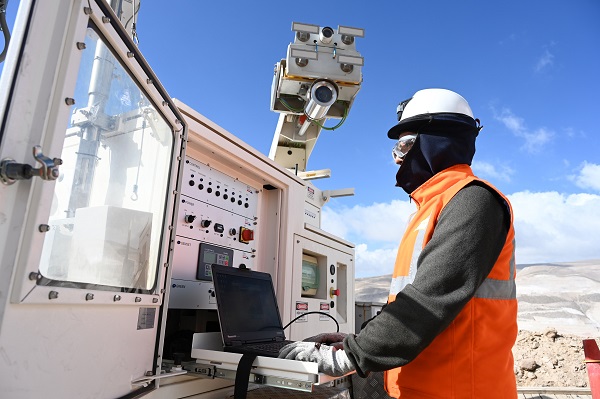At the Quellaveco copper mine in Peru, a modern geotechnical monitoring system for slopes and material deposits has been implemented by Anglo American, which uses four radars, analysis of satellite images, and a robotic station that monitors nearly 200 geolocation devices (prisms) in the field. Thanks to this technology, potential instability in different structures can be identified and thus manage the risks of collapse, providing greater safety to workers and mine equipment. The radar technologies include the GroundProbe SSR-XT and IBIS-ArcSAR from IDS GeoRadar.
When slopes move at a speed greater than safe limits, there is a risk of collapse. The radars scan the slopes every two minutes and send images to the geotechnical control centre, where the information on the changes and displacement of the surfaces is analysed. These data allow predictive decisions to be made by applying mathematical models. “The geotechnical monitoring system gives us predictability about the stability of the slopes. In other words, we can know several hours in advance if a slope could collapse, which allows us to implement safety controls such as the installation of barriers or the evacuation of the area, if applicable,” says Yhadin Collao Izaguirre, a geotechnical engineer at Anglo American.
At the Quellaveco geotechnical control centre there is a “sentry” 24 hours a day, monitoring the information transmitted by the radars. In case of noticing a risk of collapse, its function is to issue an alert so that the area can be evacuated. This information is shared in real time with all the workers and equipment that are in the area.
The geotechnical monitoring system also uses satellite images to monitor the stability of slopes, material deposits, roads, among other surfaces, covering different areas of Quellaveco such as the Vizcachas dam in high mountains, the mining area, the processing plant and the tailings dam. The satellites record information every six days and with it the behaviour of its different components is analysed.
Traditionally, for this monitoring, a system of prisms was used, which are devices that emit coordinates and that when moving can give data on the displacement of slopes. In the mine, about 200 prisms, installed on the mine slopes and material deposits, are monitored by a robotic station, which autonomously collects information and sends it to the control centre. In this way, Anglo says that Quellaveco uses the most modern technology to ensure responsible and safe mining.











